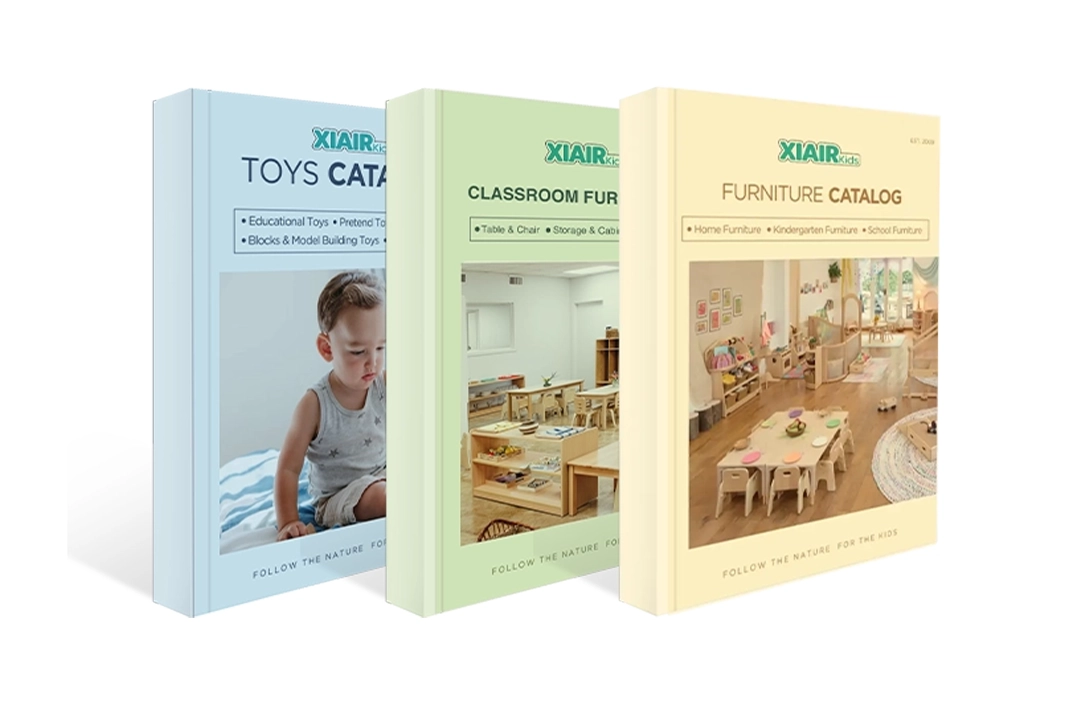Are your preschoolers struggling with basic tasks like holding a pencil, using scissors, or tying their shoes? Fine motor skills are crucial for these everyday activities, yet many young children face challenges developing them. How can we help preschoolers strengthen these skills engagingly and effectively?
The good news is that plenty of fun and engaging fine motor activities for preschoolers can make a significant difference. These activities help children improve their hand-eye coordination, dexterity, and muscle strength while boosting their confidence. Preschoolers can develop important skills playfully and educationally by incorporating these activities into daily routines.
In this article, we’ll provide over 40 fine motor activities for preschoolers designed to be entertaining and educational. Whether you’re a parent or an educator, these simple yet effective activities will help your preschoolers build the fine motor skills they need to succeed. Let’s explore these creative ways to support early childhood development!
What Are Fine Motor Skills?
Fine motor skills refer to using small muscles in the hands, fingers, and wrists to perform precise movements. These skills are essential for tasks that require coordination and control, such as writing, drawing, cutting, buttoning a shirt, or manipulating small objects. Fine motor skills develop over time as children practice and refine their hand-eye coordination, dexterity, and finger strength.
Fine motor skills are crucial for many preschool activities that help build cognitive and physical development. These skills also contribute to independence and self-confidence as children learn to perform tasks independently.
Fine Motor Vs. Gross Motor Skills
While fine motor skills involve the smaller muscle groups in the hands and fingers, gross motor skills are related to larger muscle groups used in movements like running, jumping, or climbing. Both sets of skills are essential for overall development, but fine motor skills are crucial for tasks that require detailed and precise movement. It’s important to remember that fine motor skills don’t develop in isolation but in connection with the development of other skills.
| Category | Fine Motor Skills | Gross Motor Skills |
|---|---|---|
| Definition | Involve the coordination of small muscles, especially in the hands and fingers | Involve the coordination of large muscles used for whole-body movement |
| Examples | Writing, cutting with scissors, bead threading, buttoning, page turning | Running, jumping, climbing stairs, throwing, riding a bike |
| Development Onset | Begins in infancy with grasping and gradually becomes more precise | Starts with rolling, crawling, then develops into running and jumping |
| Required Coordination | Hand-eye coordination, precision control | Balance, strength, speed, and spatial awareness |
| Common Practice Methods | Puzzles, scissors exercises, crafts, and using small tools | Outdoor play, sports, jump rope, dancing |
| Impact on Learning | Supports handwriting, art, and using classroom tools | Enhances physical fitness, teamwork, and active engagement |
| Key Organs/Systems | Hands, fingers, small muscle groups, and the nervous system | Arms, legs, large muscle groups, and core muscles |
| Parental Support Tips | Offer fine motor tools, and encourage dressing independently | Allow outdoor play, engage in physical activities, and encourage active games |
The Importance of Fine Motor Activities for Preschoolers
Fine motor skills are crucial for young children as they help build the foundation for various tasks they will use throughout their lives. These skills refer to the small, precise movements made by the muscles in the hands, fingers, and wrists. Fine motor activities for preschoolers play an essential role in their physical, cognitive, and emotional development.
Enhanced Academic Skills:
Fine motor activities for preschoolers help children develop skills that will later contribute to their academic success, such as writing, reading, and performing mathematical operations. These activities are stepping stones that prepare preschoolers for the learning tasks they will face in school.
Improved Hand-Eye Coordination:
Fine motor activities for preschoolers help develop hand-eye coordination, which is important for everyday tasks. Whether drawing a picture, feeding themselves, or playing a musical instrument, fine motor skills and hand-eye coordination go hand in hand.
Strengthened Independence:
As children practice and master fine motor tasks, they gain a sense of independence. Simple fine motor activities for preschoolers, like buttoning their shirts or tying their shoes, give them the confidence to take care of themselves, boosting their self-esteem and helping them develop a sense of autonomy.
Improved Concentration and Focus:
Many fine motor activities for preschoolers require children to focus on the task. Whether completing a puzzle or threading beads onto a string, preschoolers learn how to maintain attention and stay focused for extended periods, which is important for their overall development.
Socialization and Cooperative Play:
Fine motor activities for preschoolers often involve group play, where children can collaborate, share tools, and interact socially. This helps develop essential social skills, including communication, cooperation, and empathy.
Your perfect classroom is one click away!
Fine Motor Activities for Preschoolers
As preschoolers begin to explore and interact with the world around them, their fine motor skills play a crucial role in their overall development. In this section, we’ll explore a variety of fun and engaging fine motor activities for preschoolers. Incorporating these activities into daily routines can help children build a strong foundation for future learning and independence.
1. Playdough Sculpting

Give children playdough and encourage them to create various shapes, animals, or letters. These fine motor activities for preschoolers help develop their fine motor skills by allowing them to use their fingers to roll, pinch, and squish. Kids strengthen their hand muscles and enhance creativity as they mold their creations.
2. Button Sorting
Provide a collection of buttons in different colors, sizes, and shapes for children to sort. These fine motor activities for preschoolers help improve finger dexterity and hand coordination. It also promotes cognitive development through sorting. Children learn categorization while engaging in hands-on play.

3. Threading Beads

Use beads and a string to let children practice threading them onto the string. These fine motor activities for preschoolers enhance hand-eye coordination and pincer grasp. Threading beads is a fun way to improve manual dexterity and fine motor strength. It also promotes patience and concentration.
4. Cutting with Scissors
Provide safety scissors and encourage children to cut along straight or curved lines on paper. This activity strengthens their grip and hand-eye coordination and promotes control and precision in their hand movements. Scissor skills are essential for cutting paper, opening packages, and dressing.

5. Pasting Collages

Give children various materials such as colored paper, fabric, or magazine cut-outs. Let them glue pieces onto a larger sheet to create a collage. This activity promotes fine motor skills through the careful application of glue and the manipulation of materials. It also fosters creativity and spatial awareness.
6. Drawing with Crayons
Provide crayons and large sheets of paper, allowing children to draw freely. These fine motor activities for preschoolers enhance their grip strength and hand coordination. They also improve children’s ability to control writing and drawing tools while boosting creativity and supporting overall fine motor skill development.

7. Building with Blocks

Use small blocks to let children build towers or structures. These fine motor activities for preschoolers encourage fine motor development as they stack and balance pieces. They also enhance spatial reasoning skills and help children learn problem-solving techniques by experimenting with balance, size, and shape.
8. Tearing Paper for Collages
Let children tear pieces of colored paper into small bits to use in art projects. Tearing paper helps strengthen hand muscles and fine motor coordination. It also improves focus and patience as children work on their projects. The texture of the paper adds sensory stimulation to the activity.
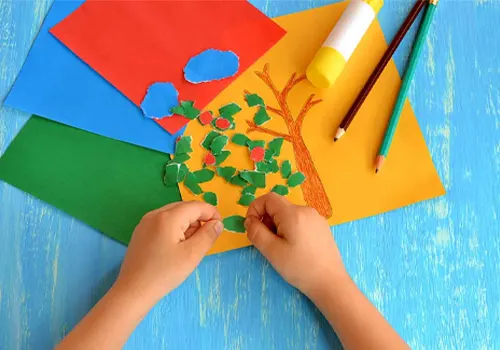
9. Picking Up Small Objects
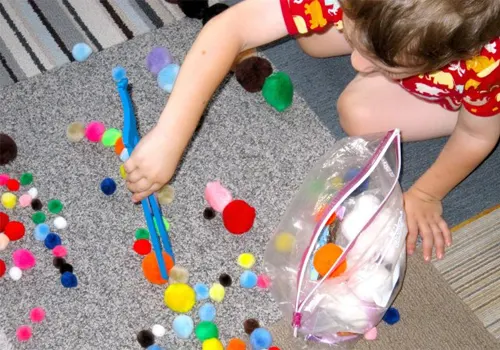
Scatter small items like pom-poms, buttons, or beads on a tray and let children pick them up using tweezers or tongs. These fine motor activities for preschoolers develop hand strength and precision, encourage fine motor control and concentration, and, using tweezers, add difficulty that challenges the child’s coordination.
10. Sticker Placing
Give children sheets of stickers and a piece of paper to stick them on. These fine motor activities for preschoolers work on hand-eye coordination and finger dexterity. It helps children practice the control needed to place small items accurately. They also gain a sense of accomplishment as they complete their sticker artwork.

11. Sorting Coins

Provide various coins and have children sort them by size, color, or denomination. These fine motor activities for preschoolers work on hand-eye coordination and the use of small hand muscles. It also encourages learning about money and numeracy. Sorting coins helps children develop early math and organizational skills.
12. Baking or Cooking Together
Involve children in simple kitchen tasks like stirring, pouring, or kneading dough. These activities enhance fine motor skills by using different hand movements. It also teaches them about measurements, following directions, and hand-eye coordination. Cooking offers both sensory and cognitive benefits for preschoolers.
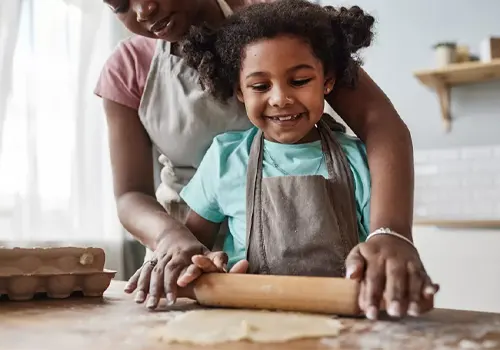
13. Lacing Cards

Use lacing cards with holes and colorful string for children to lace through. These fine motor activities for preschoolers strengthen hand-eye coordination and fine motor skills. Lacing also helps children practice patience and precision. Adding more holes or intricate designs can make the activity more challenging.
14. Planting Seeds
Let children plant seeds in small or garden pots, helping them carefully scoop soil and place seeds. This encourages hand strength and coordination. The repetitive action of scooping and pressing helps develop fine motor skills. Planting also offers an opportunity to learn about nature and responsibility.

15. Zipping and Buttoning Practice

Provide a clothing item like a jacket with zippers or buttons for children to practice. These fine motor activities for preschoolers enhance their fine motor skills and independence. They learn to manipulate fasteners, which are essential for dressing. This activity also promotes problem-solving and self-help skills.
16. Sensory Bins with Small Objects
Fill a bin with items like rice, beans, or pasta, and hide small objects inside for children to find. This enhances fine motor skills by using fingers to search and retrieve. It also provides sensory feedback as children feel different textures. Sensory bins are great for tactile learning and exploration.

17. Bead Counting

Provide a set of beads and encourage children to count them while stringing them together. These fine motor activities for preschoolers develop numeracy skills and fine motor control. The act of counting while threading helps reinforce early math concepts. It also strengthens hand muscles and coordination.
18. Ripping Tape for Crafts
Let children use masking or washi tape to tear strips and apply them to craft projects. This activity strengthens their hands and wrists while improving control. The tactile feel of tape encourages sensory exploration. It also promotes creativity as children use the tape in different ways.
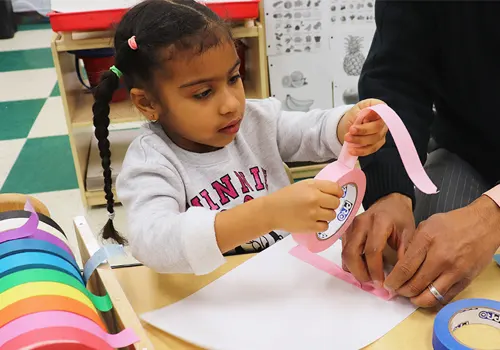
19. Tying Knots with String
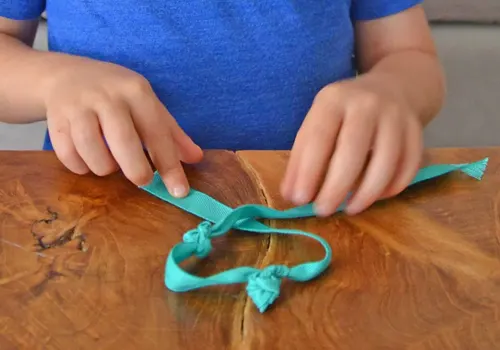
Teach children to tie basic knots using string or yarn. These fine motor activities for preschoolers strengthen hand and finger muscles. It also helps with patience and problem-solving as they learn to tie successfully. Tying knots is a foundational skill for many everyday tasks.
20. Stamping with Ink Pads
Provide rubber stamps and ink pads for children to create printed images. This activity helps improve hand control as they press the stamp. It also fosters creativity and fine motor coordination. Stamping encourages children to explore different designs and patterns.

21. Using a Pipette for Water Play

Provide a pipette and a water bowl for children to transfer water from one container to another. This activity promotes hand-eye coordination and fine motor strength. It also encourages experimentation with volume and measurement. The repetition of squeezing and releasing the pipette builds finger dexterity.
22. Rock Painting
Give children small rocks and paint to decorate them. This activity enhances fine motor skills by allowing children to paint and detail their designs carefully. It encourages creativity and patience. It also helps develop precision in hand movements as they work on a small scale.
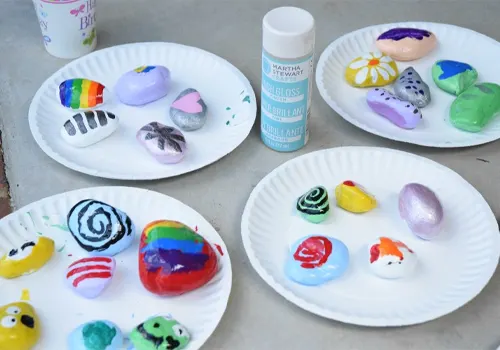
23. Pinning Objects to a Bulletin Board

Allow children to attach items to a bulletin board with pushpins or clothespins. This helps to develop their hand strength and dexterity. Pinning objects helps children practice precision and fine motor control. It also provides an opportunity for organization and sorting tasks.
24. Playing with Toy Tools
Offer children toy tools (like a plastic hammer or screwdriver) to pretend to fix or build things. These fine motor activities for preschoolers improve hand strength and control through repetitive motions. It also encourages imaginative play and problem-solving. Using toy tools can be fun to develop motor skills while playing.

25. Poking Objects into Playdough

Give children playdough and small objects like straws, toothpicks, or sticks. Encourage them to poke the objects into the playdough. This activity helps children develop their grip strength and control. It also allows for sensory exploration and imaginative play as they create different shapes and designs.
26. Tracing Shapes and Letters
Provide worksheets or templates with shapes or letters for children to trace. This activity helps improve hand control and the ability to follow lines. It also strengthens pencil grip and hand-eye coordination. Tracing shapes and letters is an early skill for writing development.
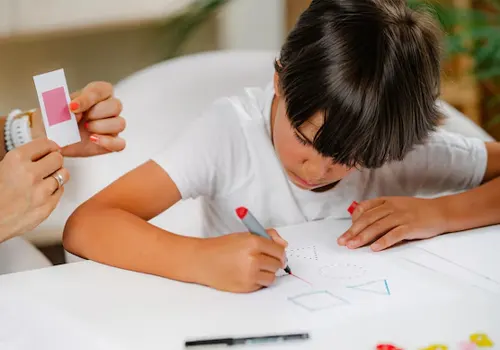
27. Playing with Small Magnets
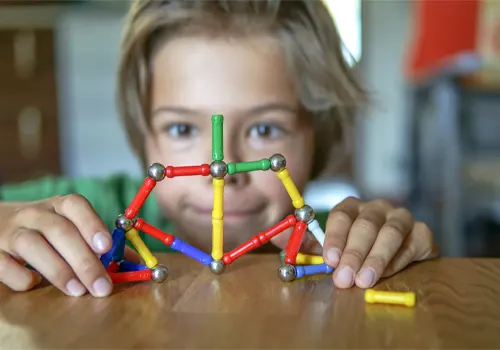
Let children manipulate small magnets on a magnetic board or surface. These fine motor activities for preschoolers improve fine motor control as they move the magnets. It also encourages the exploration of magnetic properties. The activity helps children develop spatial awareness and problem-solving skills.
28. Painting with Sponges
Provide sponges and paints for children to use for stamping and painting. This activity strengthens hand muscles as they dip and press the sponges. It also promotes creativity and hand-eye coordination. The soft texture of the sponges adds a sensory element to the activity.

29. Balancing Objects on a Spoon
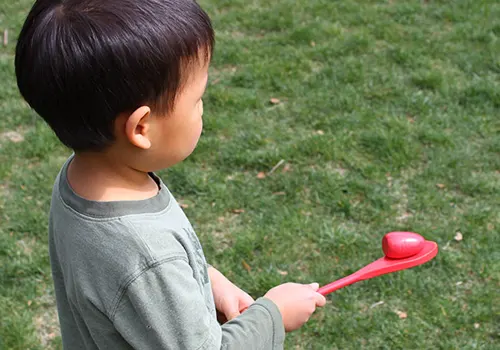
Give children a spoon and small objects to balance on it, then challenge them to carry the spoon across the room. This activity improves hand-eye coordination and fine motor skills. It also strengthens wrist and hand control. The challenge of balancing objects adds a fun element of skill development.
30. Sorting Colored Blocks
Provide a set of colored blocks for children to sort into corresponding containers. This improves their ability to recognize colors and sort objects. The fine motor skill development comes from picking up and placing each block. Sorting helps develop early math skills like categorization.
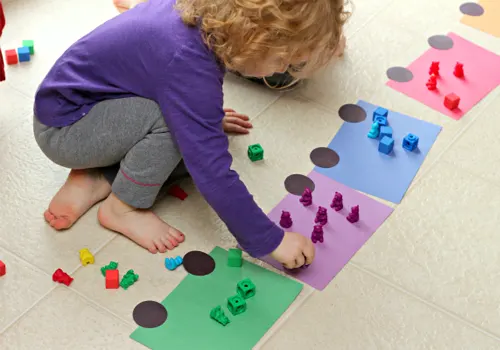
31. Building with Magnetic Tiles
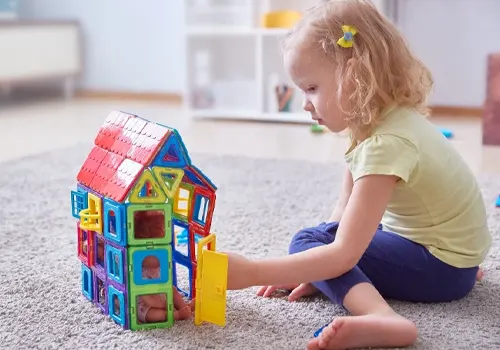
Use magnetic tiles or building pieces for children to create structures and shapes. This activity encourages hand-eye coordination and fine motor control. It also promotes creativity and problem-solving. Building with magnetic tiles helps children understand symmetry and balance.
32. Drawing Shapes with Chalk
Give children colored chalk and encourage them to draw various shapes on the sidewalk or board. This helps develop fine motor control and hand strength. It also fosters creativity as children experiment with shapes and colors. Drawing with chalk allows for large-scale drawing activities.
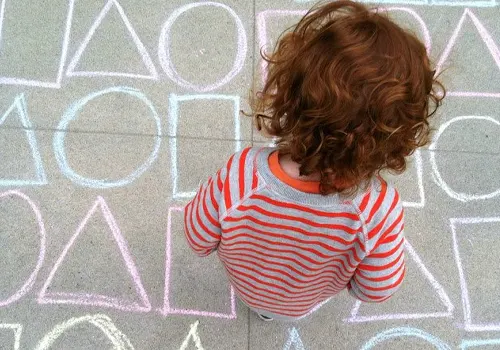
33. Filling Containers with Small Items

Teach children to fold paper into simple origami shapes. These fine motor activities for preschoolers require precision and help improve finger dexterity. It also enhances spatial reasoning and creativity. Origami encourages children to follow instructions carefully and develop patience as they complete the folds.
34. Peeling Stickers
Provide a sheet of stickers and encourage children to peel them off and place them on paper. This activity improves finger strength and dexterity. It also helps with hand-eye coordination and spatial awareness. Peeling stickers encourages patience and fine motor control.

35. Rolling a Ball into a Hole
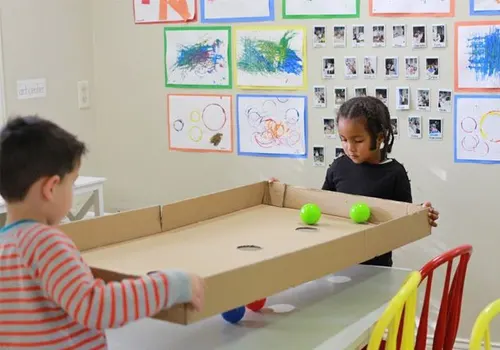
Set a game where children roll a small ball into a target or hole. This helps develop hand-eye coordination, control, and precision. It encourages the use of both hands for better coordination. Rolling balls also foster focus and problem-solving as children aim for the target.
36. Building with Straws and Connectors
Provide straws and connectors for children to build structures. This activity helps enhance hand strength and control as they connect and arrange the pieces. It encourages problem-solving and creative thinking. Children will also develop spatial awareness and an understanding of balance and structure.

37. Using Clothespins

Give children clothespins and a string or container to pin small items. These fine motor activities for preschoolers work on finger strength and dexterity. It improves their ability to grip and release objects with control. Using clothespins also helps children develop hand-eye coordination.
38. Stacking Cups
Use plastic or paper cups for children to stack and build towers. This helps develop hand-eye coordination and precision. It also encourages problem-solving as children figure out how to stack the cups without them toppling. Stacking activities also improve balance and spatial awareness.

39. Drawing in Sand

Provide children with strips of colored paper and glue or a stapler to make paper chains. This activity helps with fine motor skills as they manipulate the paper strips. It also enhances hand-eye coordination and encourages following patterns. Children will enjoy linking the strips to create long chains.
40. Using a Squeeze Bottle
Give children a squeeze bottle filled with paint, glue, or water, and encourage them to squeeze it onto a surface. These fine motor activities for preschoolers work on finger strength and control. It also improves hand-eye coordination as children direct the flow of liquid. Squeezing the bottle also provides sensory feedback, making it an engaging activity.

41. Drawing in Sand

Set up a shallow tray with sand for children to draw in with their fingers or a stick. This activity promotes fine motor control and creativity. The textured surface of the sand provides a sensory experience. It also enhances hand-eye coordination as children form shapes or letters in the sand.
42. Threading a Needle with Yarn
Teach children how to thread a needle using thick yarn. These fine motor activities for preschoolers promote hand-eye coordination, precision, and focus. Threading a needle also improves the pincer grip, which is important for writing and other fine motor tasks. Children can use the yarn to create simple craft projects.
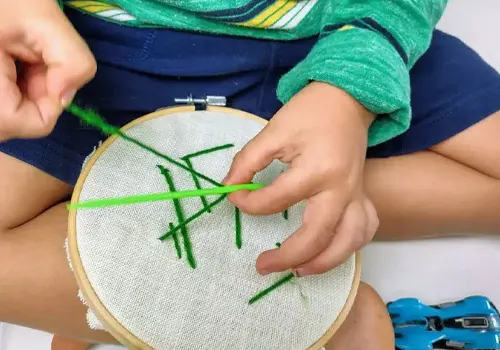
Don’t just dream it, design it! Let’s chat about your custom furniture needs!
How Parents and Educators Can Promote Fine Motor Skills Development
Parents and educators are responsible for supporting the development of fine motor skills in preschoolers. These skills lay the foundation for writing, self-care, and overall independence. Below is a structured guide to help adults nurture these critical abilities effectively.
Understanding the Objective
The goal is to strengthen small muscle groups in the hands and fingers, enhance coordination, and promote precision in everyday tasks. Effective fine motor development prepares children for school activities such as writing, using tools, and performing self-care routines.
Guiding Principles
- Consistency over intensity: Daily exposure is more effective than occasional drills.
- Play is learning: Children build skills best through engaging, playful experiences.
- Scaffold learning: Start simple and gradually increase the complexity of tasks.
- Observe and adapt: Every child develops at their own pace; tailor support to their needs.
Core Strategies for Home and Classroom

1. Integrate Fine Motor Tasks into Daily Routines
Encourage activities such as buttoning clothes, tying shoelaces, zipping backpacks, and using forks or chopsticks. These real-life skills promote both independence and hand coordination.
2. Set Up Structured Fine Motor Activity Stations
Create rotating stations or toolkits with manipulatives like:
- Lacing cards and string
- Pegboards and beads
- Child-safe scissors with paper strips
- Tweezers and pom-poms
3. Encourage Drawing, Coloring, and Tracing
Provide various tools—crayons, chalk, thick and thin markers. Start with large strokes and progress to detailed tracing to build pencil control and wrist stability.
4. Use Manipulatives and Sensory Play
Playdough, slime, sand writing trays, and building blocks strengthen finger muscles and improve tactile sensitivity.
5. Facilitate Art and Craft Projects
Cutting, gluing, folding, and pasting are not just creative outlets—they’re powerful fine motor exercises that build bilateral coordination.
6. Include Music and Movement Games
Finger rhymes (like “Itsy Bitsy Spider”) and hand-clapping games support rhythm, sequencing, and hand coordination in fun, memorable ways.
Best Practices and Tips
- Use adaptive tools: For struggling children, thicker pencils, loop scissors, or pencil grips can provide better control.
- Be patient and positive: Applaud effort over outcome. Avoid over-correcting or rushing a child.
- Model the task: Demonstrate slowly and clearly. Visual cues support comprehension and imitation.
- Limit screen time: Excessive use of tablets can limit hand movement variety. Replace with hands-on activities.
- Create a distraction-free zone: Ensure children have a stable, well-lit space with minimal interruptions for fine motor activities.
When to Seek Extra Help
If a child consistently avoids using hands, struggles with grasping, or shows frustration during basic tasks, consult a pediatric occupational therapist. Early assessment can identify developmental delays and provide individualized support.
Preschoolers’ Fine Motor Skills Development Stages
Fine motor development does not happen overnight. Instead, it gradually progresses as children build muscle strength, coordination, and control. Understanding these stages can help parents and educators provide appropriate fine motor activities for preschoolers at different stages.
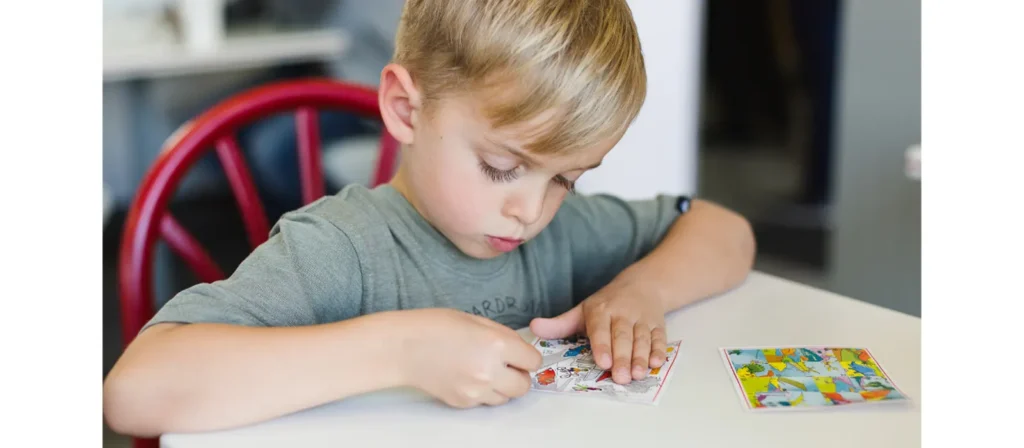
Stage 1: Infancy (0–12 Months)
During infancy, babies begin to develop basic hand control. This is when they first grasp objects, bring them to their mouths, and experiment with reaching and holding. At this stage, babies do not have complete control over their hand movements, but they begin learning to use their hands in coordination with their eyes.
Stage 2: Toddlerhood (1–2 Years)
By toddlerhood, children’s fine motor skills become more refined. They can hold small objects, use their fingers to manipulate toys and start practicing self-feeding. They may also begin showing interest in scribbling and exploring different textures.
Stage 3: Early Preschool (2–3 Years)
At this stage, preschoolers are starting to develop the ability to stack blocks, draw basic shapes, use utensils with more precision, and engage in simple puzzles. Hand-eye coordination improves, and children can use tools like crayons or small spoons with increased accuracy.
Stage 4: Late Preschool (3–5 Years)
By 3 to 5 years old, preschoolers can perform more complex tasks that require fine motor skills, such as cutting with scissors, writing letters, drawing more detailed pictures, and completing jigsaw puzzles. They can also begin to manipulate smaller objects, such as buttons or zippers, with greater ease.
Stage 5: Early School Years (5–6 Years)
As children approach school, they continue to refine their fine motor skills, focusing on skills necessary for academic tasks like writing, drawing, and using computers or other tools. Children this age typically gain the strength and coordination needed to hold a pencil correctly and form letters and numbers.
Key Fine Motor Skills for Preschoolers
The development of fine motor skills involves several core areas. Preschoolers need to develop proficiency in these skills to navigate their everyday tasks effectively.
1. Hand-Eye Coordination
Hand-eye coordination is essential for performing tasks such as drawing, feeding oneself, and catching a ball. It involves the ability to synchronize hand movements with visual input. Activities that require hand-eye coordination support brain development, attention, and focus.
2. Grasping Skills
A child’s grasp is vital for their ability to hold and manipulate objects. This skill starts with a simple palmar grasp, where babies hold objects with their whole hand, and progresses to more refined grasps, such as the tripod grasp, needed for writing and drawing.
3. Finger Dexterity
Finger dexterity refers to the ability to move fingers independently and with control. This skill is necessary for tasks like buttoning clothes, tying shoes, and using scissors. Finger dexterity also supports cognitive skills, as children can manipulate smaller pieces during play, such as blocks or puzzle pieces.
4. Bilateral Coordination
Bilateral coordination is the ability to use both hands together in a coordinated way. For example, they use bilateral coordination when children use both hands to manipulate a tool or carry out a task, like cutting with scissors or holding a piece of paper steady while coloring.
5. Pre-Writing Skills
Before children can write letters or numbers, they must first develop pre-writing skills. These include drawing lines, shapes, and squiggles and practicing basic horizontal, vertical, and circular movements. Mastering these pre-writing skills is a precursor to forming letters and numbers.
6. Fine Motor Planning
Fine motor planning is the ability to conceptualize and execute tasks that require fine motor coordination. For example, children need to plan how to use tools like crayons or glue sticks to complete a task and sequence the steps needed for a project.
Your perfect classroom is one click away!
Fine Motor Skills Toys for Preschoolers:
The right toys can make all the difference when developing fine motor skills in preschoolers. These skills, such as hand-eye coordination, dexterity, and grip strength, are fundamental for everyday tasks like writing, dressing, and using utensils. Fine motor skills toys for preschoolers offer an enjoyable and interactive way for children to practice and improve these abilities. This section will explore toys that entertain and enhance essential fine motor skills in young children.
- Building Blocks: Building blocks are a classic choice for fostering fine motor skills in preschoolers. Children improve hand-eye coordination and finger dexterity by stacking, arranging, and aligning blocks. Whether traditional wooden blocks or larger, more colorful plastic blocks, this toy encourages creativity and problem-solving while strengthening small hand muscles.
- Shape Sorters: Shape sorters are excellent tools for helping preschoolers recognize different shapes and sizes while practicing hand-eye coordination. By fitting shapes into the correct holes, children engage their finger muscles and develop the ability to grasp, twist, and rotate objects, all of which are important for fine motor development.
- Lacing Beads: Lacing beads is a fun and engaging way to improve finger strength and hand-eye coordination. Preschoolers thread the beads onto a string, creating patterns and designs. This simple yet effective activity helps improve fine motor control, concentration, and hand strength, making it a great choice for young learners.

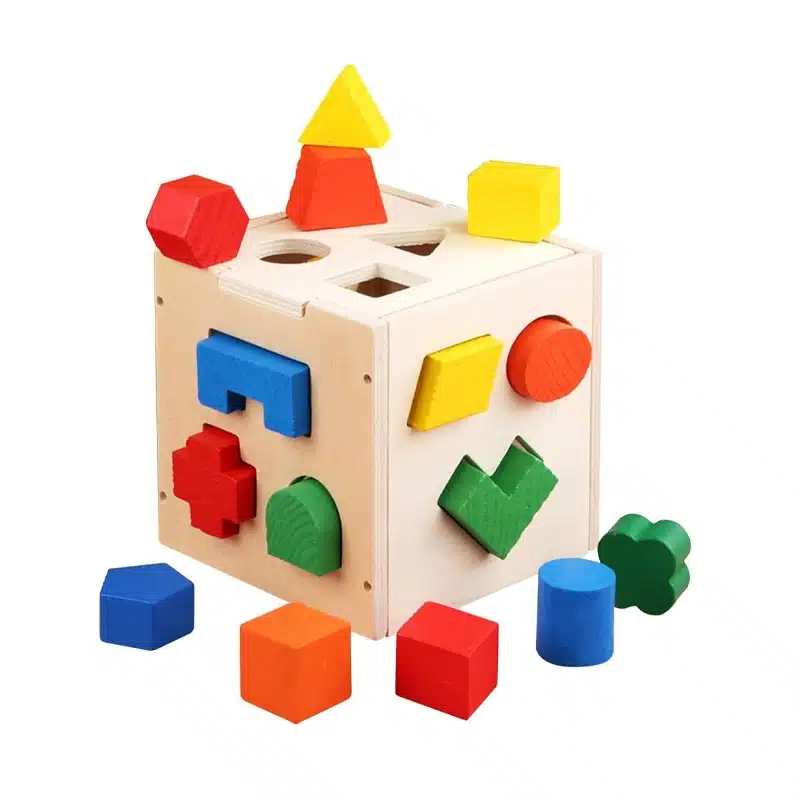

- Puzzles: Puzzles are another fantastic tool for fine motor development. Whether it’s jigsaw puzzles, wooden puzzles with pegs, or knob puzzles, these toys require children to manipulate small pieces and fit them together, improving their finger dexterity, spatial awareness, and problem-solving skills. Puzzles are beneficial for fine motor skills and support cognitive development.
- Art Supplies: Art supplies such as crayons, markers, scissors, and playdough offer endless opportunities for preschoolers to strengthen their fine motor skills. Drawing, cutting, and shaping materials help enhance hand strength and precision. Activities like coloring and molding also encourage creativity while reinforcing motor control.
- Tweezers and Tongs: Using tweezers or tongs to pick up small objects is an excellent way to build the small muscles in a child’s fingers. These tools help preschoolers practice precision and coordination, essential for later skills like writing and using utensils. Children can use these tools to transfer small objects like pom-poms or buttons from one container to another, turning a simple task into an engaging challenge.

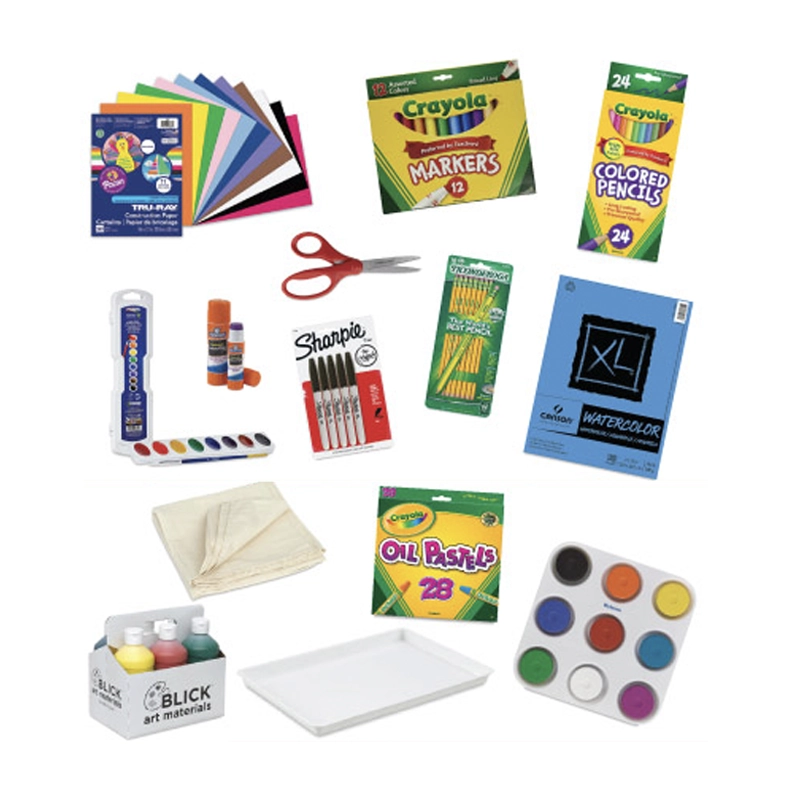

Conclusion
Incorporating fine motor activities for preschoolers into daily routines is a fun and effective way to support young children’s development. These activities enhance essential skills like hand-eye coordination and dexterity and foster confidence and independence. By integrating creative and engaging fine motor exercises, parents and educators can help preschoolers master tasks like drawing, cutting, and dressing with ease. Make these fine motor activities for preschoolers a regular part of their routine, and watch them thrive in their academic and personal growth.



